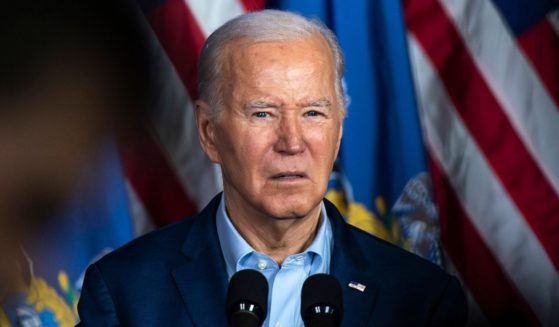New Figures Show Countries May Be Turning the Corner on Coronavirus, But Democrats Need Us Scared
First, I am not an epidemiologist. I’m not a doctor. I’m not even a med student. I have a master’s in public policy and took one lonely health policy class (that wasn’t even very helpful). That, and some first-responder training are about all the medical expertise I have, so take what’s below with at least a grain of salt.
Coronavirus is here. It’s contagious. It’s deadly. And aside from Mueller, Kavanaugh and impeachment, it’s hard to think of another story the media has been so excited about over the last three-and-a-half years.
At first, the media’s concern was warranted. An exotic virus pops up in China and begins spreading quickly. Then it turns out to be deadly (never mind that it’s deadly in the vast minority of cases and those are overwhelmingly contained within the age 70+ demographic). Then it goes international. Then the media chatter starts to spook markets that depend on China. Then market corrections start. That’s the stuff of a media feeding frenzy, and feed the media has.
Stories abound about new cases, new borders crossed and new famous and/or powerful people quarantining themselves.
Those stories, however, don’t really get at the root question we need to ask at this point in the drama.
The question we should be asking is whether or not the daily number of new cases is increasing inside different countries.
Until the virus is eradicated entirely, new cases will continue to pop up. That’s definitionally true. And as long as there are new cases and enough people traveling internationally, the virus will cross borders.
These shouldn’t be novel concepts, though the media continues to treat them as new apostolic revelations.
What’s far more helpful than the plain number of new cases is the number of new cases compared to the previous day. If daily new cases increase over time, then the contagion hasn’t peaked and more concern is warranted.
If, however, the number of daily new cases begins to decrease over time, it’s likely a critical milestone has been hit and the virus is on its way to being controlled if not eradicated (for all intents and purposes).
If new cases consistently decrease day after day, the eventual elimination of the virus is inevitable — eventually, the new case count hits zero and stays there.
(Of course, someone’s always going to have a pesky strain of the flu or common cold — but as far as the survival of humanity goes, the new case count will be essentially zero.)
Sure, the media may report new numbers as they become available, but a consistent comparison of new case counts day over day is exactly what I’m not seeing anywhere in the media. Maybe it’s being reported, and I’ve just missed it, but so far I haven’t seen it anywhere — and I look at a lot of news each day.
So what does that count look like? It looks like light at the end of the tunnel (assuming that a tunnel even exists and wasn’t created by media hysteria in the first place).
Take China for example. New cases reported peaked on Feb. 12, but since that was due largely in part to a reporting hiccup, let’s take the next day as our peak. Feb. 13 saw 5,090 reported new cases of coronavirus in China.
Though small upticks were reported every few days, daily decreases in new cases soon followed, leading to just 327 new cases reported two weeks later on Feb. 27. On March 6, the last day data was reported, there were only 99 new cases.
I shared this information with some people earlier today, and one said, “I don’t trust anything China says.”
That’s a smart guy. But this trend isn’t confined to China.
South Korea’s cases peaked on Mar. 3 with 851 new reports. Six days later, 165 new cases were reported. On Tuesday, 35 new cases were reported.
Iran appears to have peaked on Mar. 6 with 1,234 new cases reported. Three days later, there were 595 new cases. On Tuesday, cases jumped slightly to 881 new reports, so time will tell if the downward trend will continue in the coming days as it did in China and South Korea.
China might have plenty of motivation to hide real numbers, but Iran doesn’t. They’re better off if people think the virus’ presence inside their borders is a proof of a genocidal CIA or Mossad plot.
There’s no more reason to doubt South Korea’s figures than to doubt those of the U.S., France or Germany.
So what to make of all of this?
Coronavirus infections continue to spread, and that is actually dangerous, so wash your hands, don’t share germs more than you have to, and practice good hygiene.
If you’re elderly, be especially careful because the elderly are most likely to experience death from coronavirus or its complications (about 14 percent for those 80 and over). For those under 50, it’s about 0.4 percent.
Moving forward, not only will the virus continue to spread, but daily new cases will continue to grow until the virus peaks on a global level. While new infections in China, South Korea and Iran appear to have peaked, they have not done so in France, Germany, Italy, Spain or the U.S.
In fact, in some of those countries, it appears to just now be taking off. Additionally, the Southern Hemisphere hasn’t been dramatically impacted yet. It likely will be, and the results may be alarming for a while, especially in sub-Saharan Africa. But eventually, the virus will peak there too.
China’s draconian measures may have helped stop the virus’ spread, but those measures aren’t necessary to beat the virus. Neither Iran nor South Korea took the measures China did, yet they both appear to be turning the corner too.
Coronavirus is only tangentially related to oil prices. Yes, any slowdown in Chinese manufacturing will affect oil prices vis a vis consumption. But the sudden drop in oil prices is due to Saudi Arabia dropping their prices dramatically, which is unrelated to the virus. For now, enjoy the cheaper gas and the fact that Saudi islamists and the Russians are making far less money than they were a week ago.
Democrats desperately need coronavirus to continue across the globe, sparking financial panic everywhere it spreads. Only a financial meltdown will stop Trump in November, and they know it.
Having toilet-paperless voters panicking at the polls is exactly what Democrats want and need. That alone should cause every American to question Democrats’ loyalty to the voters.
Once the virus peaks, the economy may well go into overdrive, which is the very last thing Democrats want because, again, Trump will get credit. As of this writing, the Dow is down 19 percent over the last month.
Once the Chinese supply chain has stabilized (and hopefully global manufacturers begin to find alternatives to China) and the public realizes the world isn’t ending, a buying spree should turbocharge stock prices. Will they return to their early February heights?
Who can tell, but a rebound is certain to come, along with store shelves that will once again overflow with toilet paper and hand sanitizer.
Tangentially, until that happens and as long as raising prices on things like toilet paper and sanitizer is viewed as gouging, shortages of toilet paper and sanitizer will continue to exist.
If manufacturers and retailers would raise prices to meet demand, store shelves would be fully stocked at this very moment. But everyone’s afraid the media will call them gougers, so prices stay low, encouraging panic buying and leading to shortages.
Coronavirus is dangerous. It can even be deadly, just like everything else a human being can catch. It is not, however, going to destroy the world, despite the fact that fear on that level is exactly what Democrats want.
But Democrats’ political needs aside, the best we can tell at this point is that in China, a country of 1.4 billion, about 81,000 people have contracted the virus and just over 3,000 have died from it. In other words, in China, the virus has killed 0.0002 percent of the population.
In the U.S., presently, the death total is 0.000009 percent of the population — 31 out of 330 million.
Those deaths are tragic, but they shouldn’t start or propel panic, especially when panic is exactly what the left and the media need to stave off Trump.
CORRECTION, March 13, 2020: The headline of this commentary originally read “New Figures Show Countries Are Turning the Corner on Coronavirus.” Although the commentary itself made the uncertainty of this claim clear, we have updated the headline from “Are” to “May Be” to more accurately reflect the content of the commentary.
Truth and Accuracy
We are committed to truth and accuracy in all of our journalism. Read our editorial standards.











